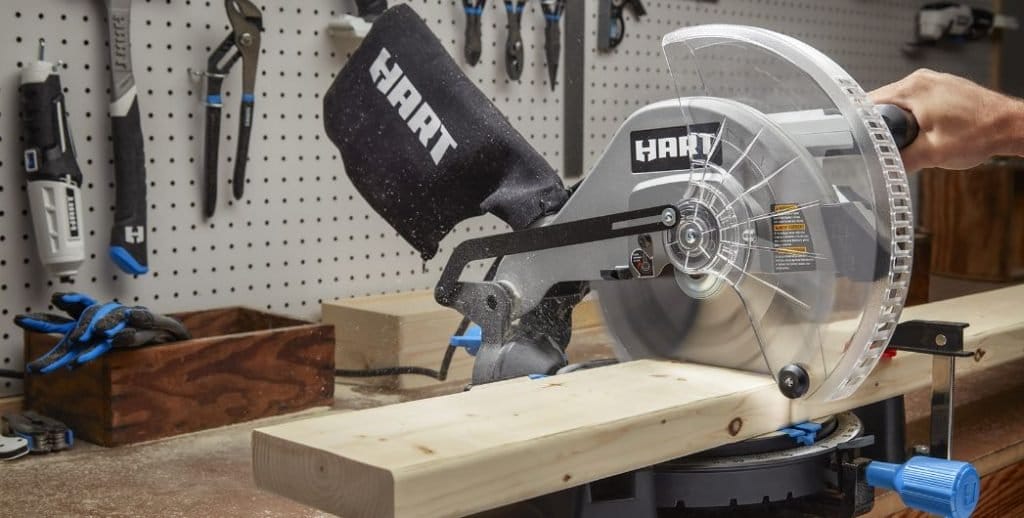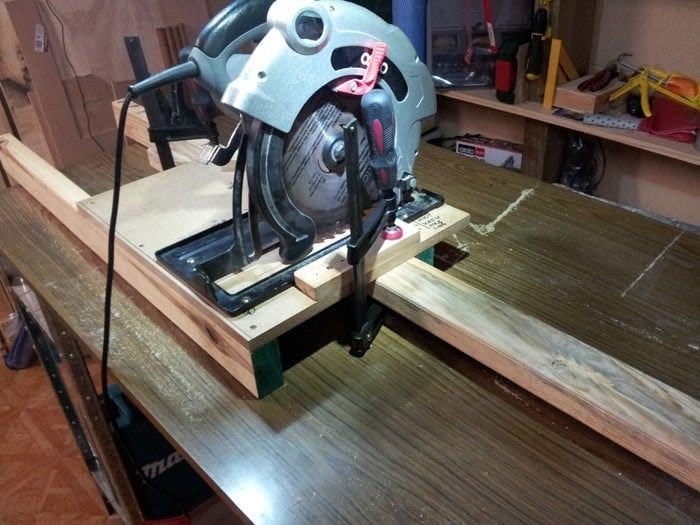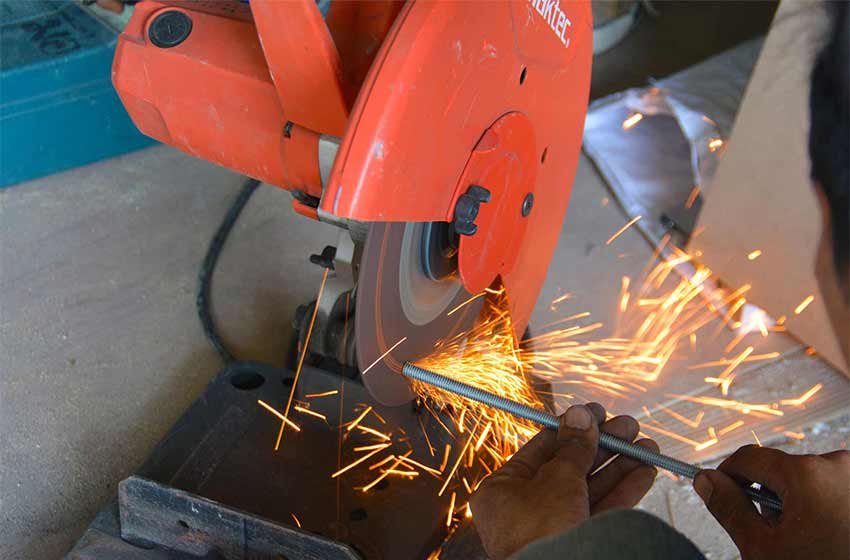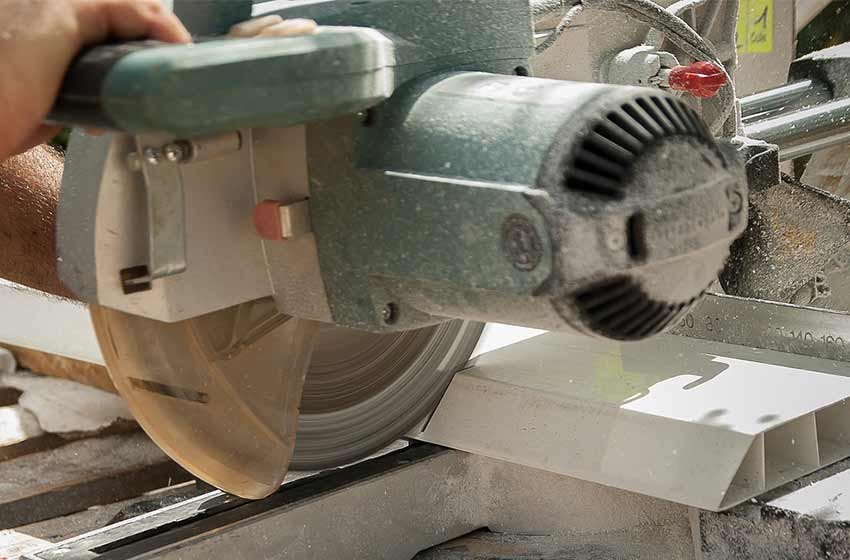A mitre saw is a woodworkers best friend, from making accurate angled cuts, board cutting, and general cuts, a mitre saw can do it all with ease.
In comparison to other saws such as circular saws, mitre saws are far more accurate and allow you to make projects such as picture frames much faster than a circular saw would allow.
We have gone into some more detail below about what a mitre saw is, its uses and how it compares to other popular DIY tools on the market so you can get to know everything you need about using a mitre saw.
What Is a Mitre Saw?
First thing first, before we dig in about the uses of a mitre saw its a good idea to know what one is and how it works.
A mitre saw is a stationary power tool that allows you to create joints in pieces of woods. The machine operates via a spinning circular blade which gets pulled down by the device on to a piece of wood. This is typically placed at a 90-degree angle.
The blades and angle can be adjusted on a mitre saw, allowing you to make different kinds of cuts such as cross cuts or carving out joints in wood. Larger mitre saws are perfect for making wider cuts and smaller ones are best for more detailed woodwork such as frames.
What Is a Compound Mitre Saw & Sliding Mitre Saw?
If you are getting to know more about mitre saws, then it's likely you've come across sliding and compound models, it can be confusing to work out the difference between each one, so we have compared the two below to help you out.
Compound Mitre Saws
Compound mitre saws are woodworkers favourite as they allow you to make two angled cuts at once; bevelled and mitre. Making this type of mitre saw very versatile due to its pivoting arm, which permits you to tip the blade when working.
Main advantages of this type of mitre saw have to be its large arch which lets you cut thicker pieces of wood and work much faster than you could with a regular mitre saw; making it considerably more suitable for professional woodworkers.
Disadvantages with this kind of saw are that it still limits you to narrower pieces of wood, despite its large arch this machine would still be unable to cut thicker materials such as logs.
Advantages
- Lets you make two cuts at once.
- Can cut thicker pieces of wood than a regular mitre saw.
- Smaller in size.
Disadvantages
- Can't cut large pieces of wood with a wide width.
Sliding Compound Mitre Saw
Sliding compound mitre saws have a sling rail which enables you to slide the saw of the device back and forth while cutting, meaning you can cut pieces of wood with a much larger width. This type of saw can still allow you to make bevel and mitre cuts too like a compound model.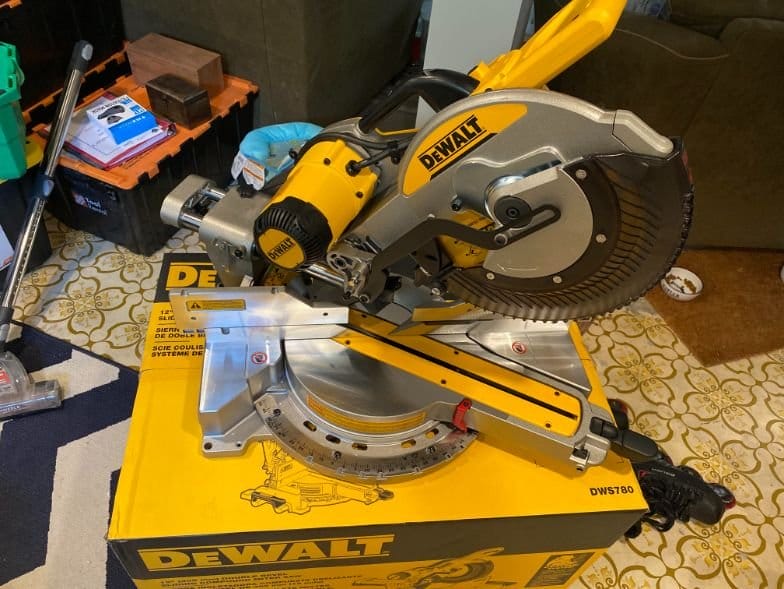
Advantages of the sliding model have to be its rails which allow you to speed up your working time and makes it perfect for cutting larger pieces of wood such as wide boards or thick logs. You can also buy these models with a double bevel cut feature which means you don't have to flip the piece of wood over each time you cut.
Drawbacks of sliding compound mitre saws are their large size due to the sliding mechanism which makes them unsuitable for small hobby workshops. These sliding models additionally tend to come with a hefty price tag which might not be worth it if woodworking is more of a hobby, not a professional occupation.
Advantages
- Can cut woods with a larger width.
- Speeds up cutting time.
- Easy to use.
Disdvantages
- Large in size.
- Expensive.
- Only needed for wider wood.
Which Type Of Mitre Is Right For Me?
Overall, the type of mitre saw you choose comes down to how you want to use it; if you are looking to cut large and thick pieces of the wood board, then it's probably best to go for a sliding compound mitre saw.
However, if your looking to save some money and aren't fussed about cutting large pieces of wood then a compound mitre saw could be a better choice.
What Are The Main Uses Of a Mitre Saw?
Now we have covered the main types of mitre saws on the market lets get down to what you can use a mitre saw, before starting its essential to know that a mitre saw can be used to make general cuts as well as angled ones and isn't just limited to specific uses.
However, we have listed out the most common types of cuts and uses you will probably come across when using a mitre saw below.
Angled Cuts
Mitre saws are perfect for making angled cuts and can typically cut with a range of 50-degrees left and right or more depending on the blade size your model has. These cuts tend to be popular in uses such as furniture making or any woodworking where you need to make two joints fit together; such as picture frame making.
Angled cuts can further be used for cutting flooring at an angle or trimming woodwork.
Crosscuts
For general cutting, a mitre saw is a great choice thanks to its stationary and heavy design which can cut wood with no movement. These saws are also very accurate and allow you to make a much more precise cut than other saws do.
Sliding mitre saws, in particular, are great for making crosscuts in larger pieces of wood than other saws.
Bevel & Compound Angle Cuts
Bevel and compound angle cuts are a more unusual type of cut to make when woodworking but can specifically only be achieved with a mitre saw. This is done by moving the saw left and right and is great for cutting complex angles in boards of wood.
Main Benefits Of Using a Mitre Saw
There are many advantages to owning a mitre saw for your woodwork which you may not have considered, mitre saws are not only great for angled cuts and can be a great investment if you are looking to take your woodwork to the next level.
We have listed out some benefits of using a mitre saw below -
- Easy to use - Mitre saws can easily be used by a beginner woodworker and aren't hard to operate after a couple of tries due to their simple mechanism, allowing you to get high-quality professional results when using this saw, even if you are not a professional woodworker.
- Can save you time - These saws tend to have very strong blades which can be used to cut thick pieces of wood in seconds, a sliding mitre saw, in particular, can make this process very fast as you don't have to turn the wood over.
- Perfect angled cuts - Compared to other power tools on the market, a mitre saw can help you achieve a perfect angled cut with no further device needed, unlike other saws.
- Highly accurate - If you want consistent and accurate results on your woodwork then a mitre saw can help you achieve this, no matter the difficulty of the material that you are using due to the angle being measured and pre-set.
Mitre Saws VS Circular Saws
After looking at the different types of mitre saws on the market and what you can use them for, you might be asking yourself whether you need a mitre saw, or if it's worth going for a circular saw instead.
Well, both can perform similar cuts on your woodwork, so we have compared the two below to help you figure out which kind of saw is right for your tool shed.
Mitre Saws
Mitre saws are much more suitable to buy if you are looking for a specific power tool that can give consistent angled cuts each time and make quick small crosscuts on pieces of wood.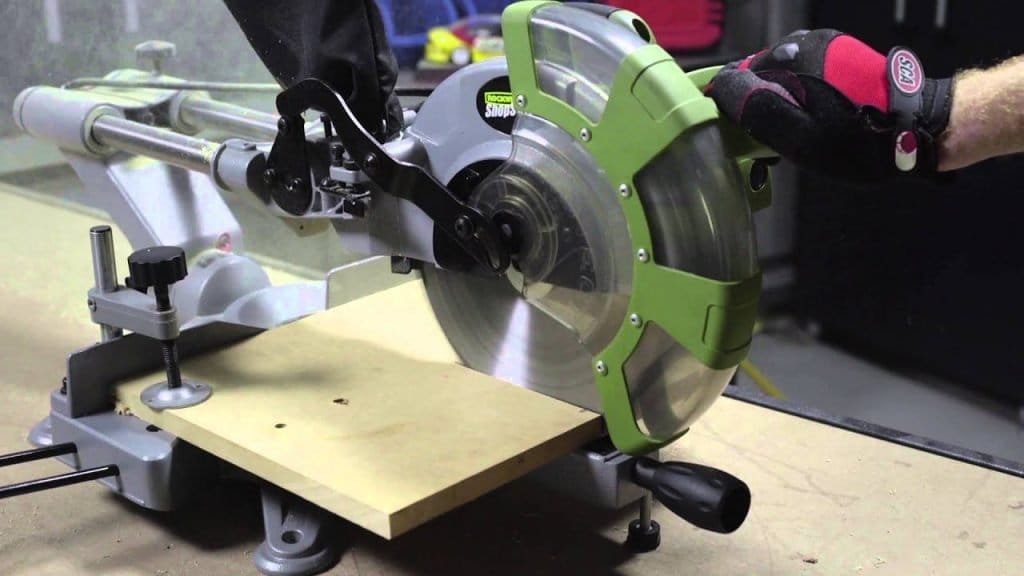
Despite these saws being more suited for small detailed work, they are much easier to use than circular saws. However, circular saws can also make angle cuts and tend to be more versatile than mitre saws.
Pros
- High accuracy level.
- Easy to use.
- Perfect for crosscuts.
Cons
- Bulky with own stand needed.
- Limited cuts in comparison to a circular saw.
- Expensive.
Circular Saws
Circular saws are a very versatile power tool and can cut a range of materials such as; plywood, plastic and metal. These saws are much more portable than mitre saws and can be handheld when working, they can be used to make many different cuts and can even achieve angled cuts too with a speed square.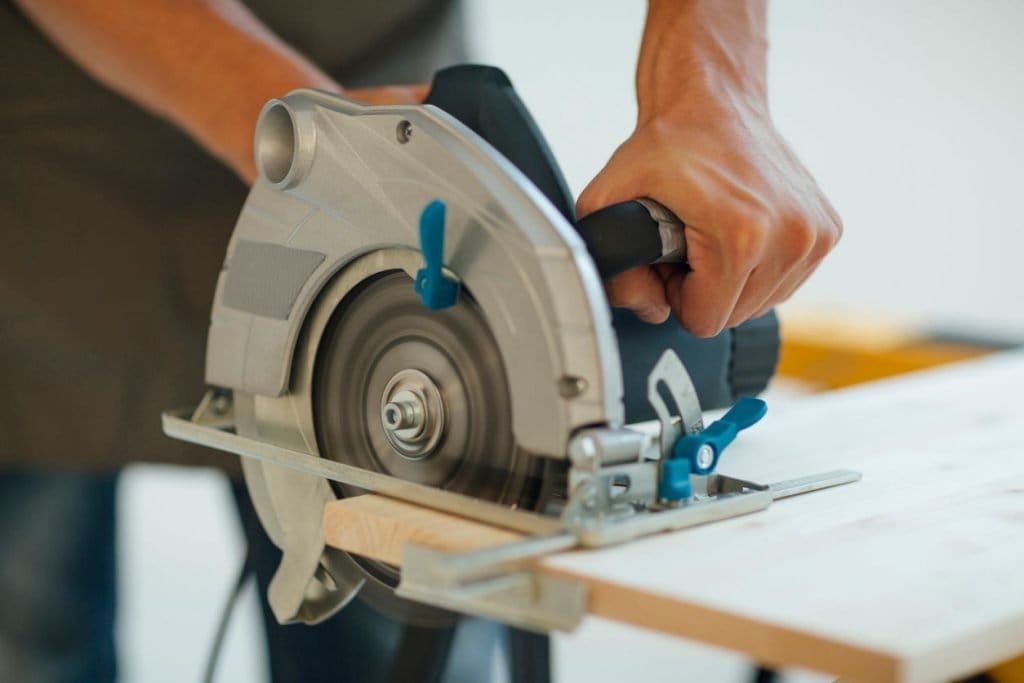
These saws are a better budget option than mitre saws and are a must-have in any woodwork situation, however, if you are looking for more precision in your angled cuts then a mitre saw could be the better option. They are also harder to use than mitre saws and would take a lot of practice if you want to achieve consistent angled cuts in your wood.
Pros
- Affordable.
- Can be used to make a variety of cuts on any material.
- Portable.
Cons
- Less accurate than mitre saws.
- Not very easy to use.
- May not be as suitable for detailed work.
To conclude, if you are looking for a more versatile power tool that can make a variety of cuts then you should most likely start with a circular saw, but, if you want to achieve detailed angles on your woodwork and you are a beginner, a mitre saw would be the more suitable choice.
Safety Tips For Using a Mitre Saw
It's important that you are familiar with how to use your mitre saw safely, power tools can be dangerous when woodworking, so you should follow the essential safety tips below to ensure you are as comfortable as possible when cutting.
- Use a safety clamp - Making sure your wood is stable when cutting is necessary, this avoids the wood slipping out of place when cutting and causing any unwanted injuries while woodworking. A clamp also gives more stability and confidence to the user.
- Ensure a blade guard is in place - It is important to make sure the sharp blade of your mitre saw has a guard, some can be brought transparent so as you can see where the blade is hitting your wood, making them better for angled cuts.
- Look for an electric brake - If your a beginner woodworker and want more control over your power tool then you should ensure your model has an electric brake. These brakes allow you to stop the machine immediately, making them better in emergencies.
- Put a dust extraction system in place - Sawdust can be uncomfortable to work around and many mitre saws, unfortunately, do not come with an effective dust extraction system. One safety function to look out for is a dust bag that can be attached to your saw, this can help improve clean-up. If you want to eliminate sawdust then it might be best to look for a dust vacuum that can be attached.
- Lockout trigger - A lockout trigger is like an extra switch on your mitre saw which has to be pushed down along with the regular switch for the saw to work; this stops anyone from accidentally turning your saw on.
- Make sure your extension cord is compatible - If your mitre saw is corded then it's likely you will need an extension cable at some point, its essential you should ensure this cord is compatible with the voltage of your saw. If your extension cord is not compatible you could risk a fire.
Final Conclusion
To conclude, a mitre saw can be used for making precise and accurate cuts and is the perfect power tool to have if you want to make cross cuts or 45-degree cuts accurately. These saws are excellent for beginners too and allow you to achieve a professional finish on your work; whether your cutting boards, picture frames or angled flooring.

